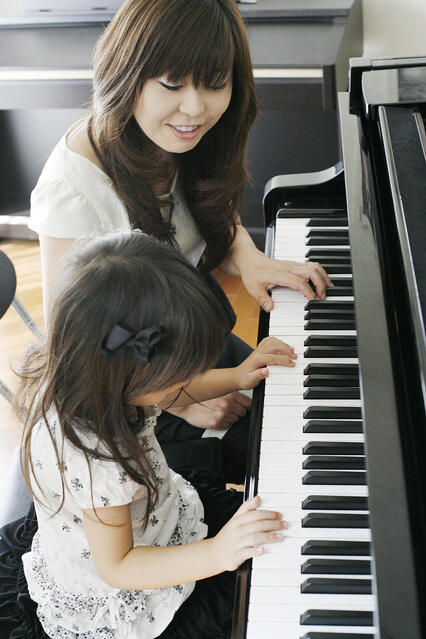Through my readings recently of Malcolm Gladwell’s “Outliers”, I happen to come across an interesting concept. It involved K. Anders Ericsson’s study of 10,000 hours of practice. Wanting to learn more about the results of this study I took some time to do a little more research. According to Ericsson, 10,000 hours of practice over the course of a decade was the average amount of practice time spent amongst musicians that excelled the most. However, Ericsson’s research also found that “goal-directed deliberate practice” was even more significant then the amount of hours spent practicing. Through both teacher guidance and independent practice, musicians gradually developed to become more advanced.
As music teachers we all know that the majority of learning happens at home. We see our students once a week for as little as thirty minutes for up to an hour. Compared to a school day where teachers see students five days a week for about six and a half hours each day, the time spent with our students seems very limited. This is why their practice at home is so important.
once a week for as little as thirty minutes for up to an hour. Compared to a school day where teachers see students five days a week for about six and a half hours each day, the time spent with our students seems very limited. This is why their practice at home is so important.
 once a week for as little as thirty minutes for up to an hour. Compared to a school day where teachers see students five days a week for about six and a half hours each day, the time spent with our students seems very limited. This is why their practice at home is so important.
once a week for as little as thirty minutes for up to an hour. Compared to a school day where teachers see students five days a week for about six and a half hours each day, the time spent with our students seems very limited. This is why their practice at home is so important.When asked the question “How did you practice this week?” I often get the response of “ I played through the piece.” How can we help our students to have the more “goal-directed deliberate practice” that Ericsson spoke of? Playing through a piece of music tends to be the habit of many students and as teachers we need to try to break this. For new pieces, creating practice steps that are concise and easy can be an effective way for a student to quickly and securely learn a new piece. I often tell my students to isolate the technique, notes, and rhythm, this way they are able to focus on one aspect of the piece at a time. Analyzing each of these elements gives the student an opportunity to feel confident to work independently at home. After focusing on each element separately they can successfully put all aspects of the piece together.
One quote that caught my eye in Gladwell’s book stated, “Practice isn’t the thing you do once you’re good. It’s the thing you do that makes you good.” Let’s strive to find creative but accessible ways to help our students become the best musicians they can be. And remember that practicing should not only be designed to improve performance but should also be enjoyable and fun!
By Amanda Prakopcyk, Piano Instructor


COMMENTS